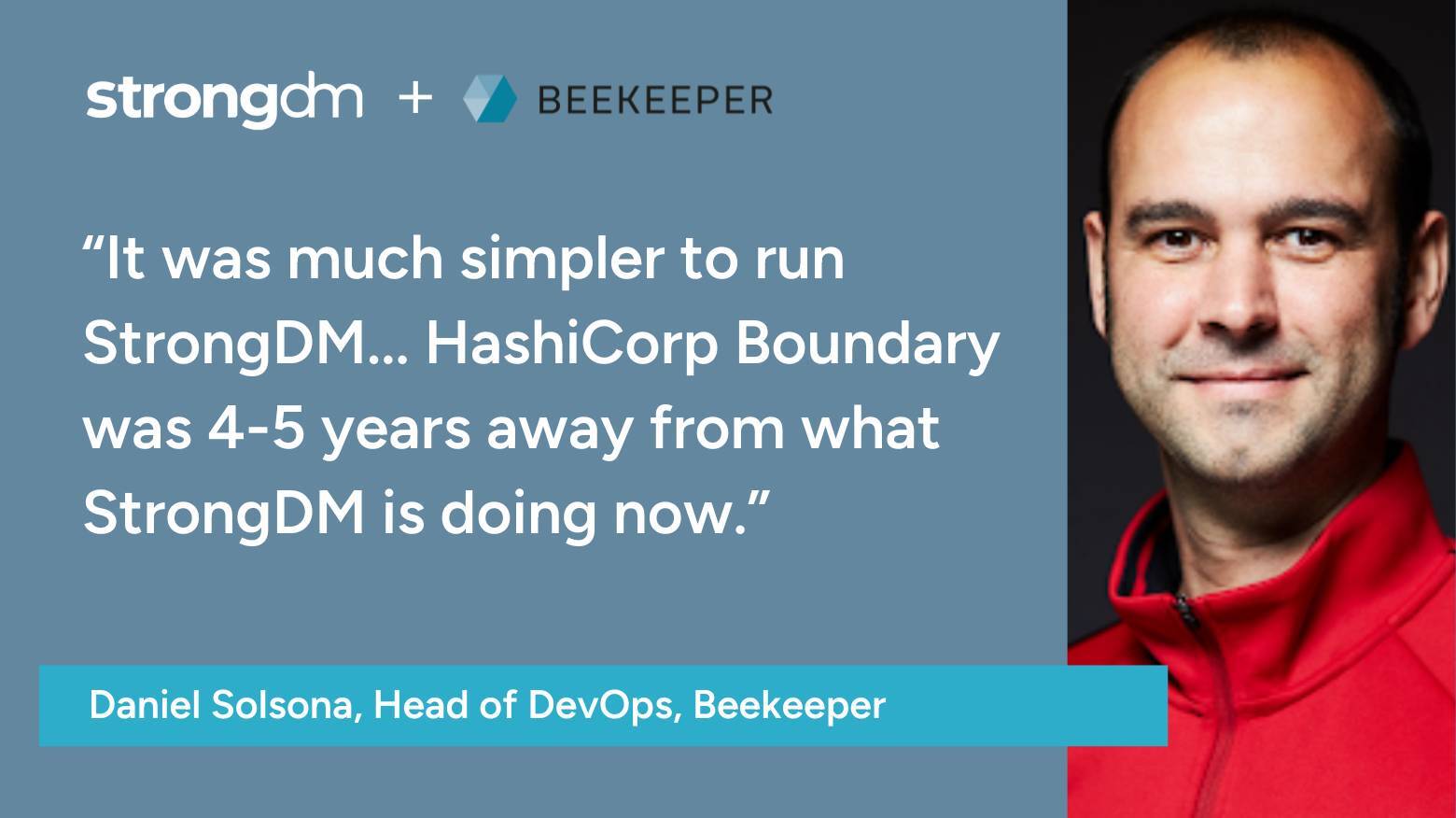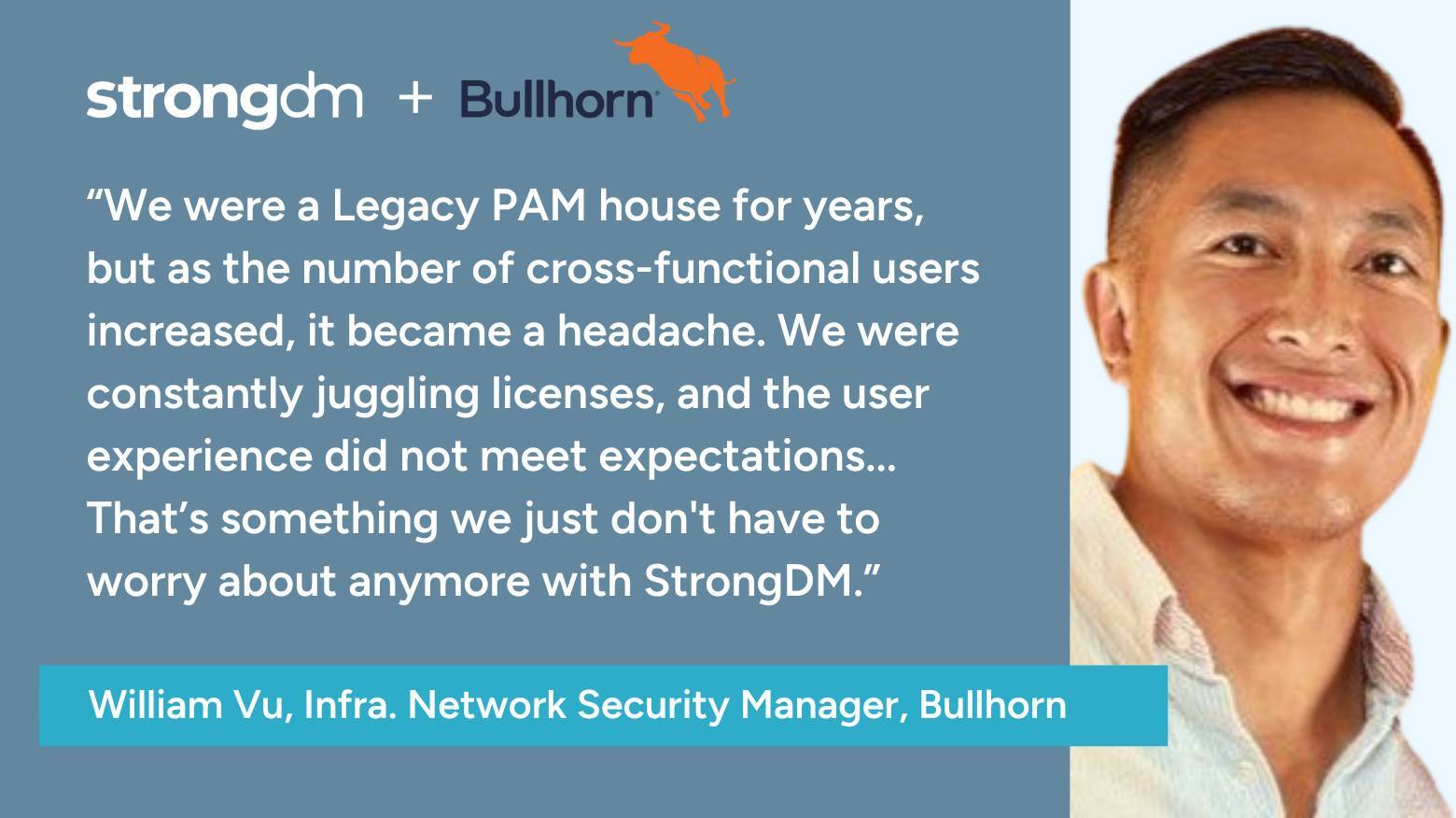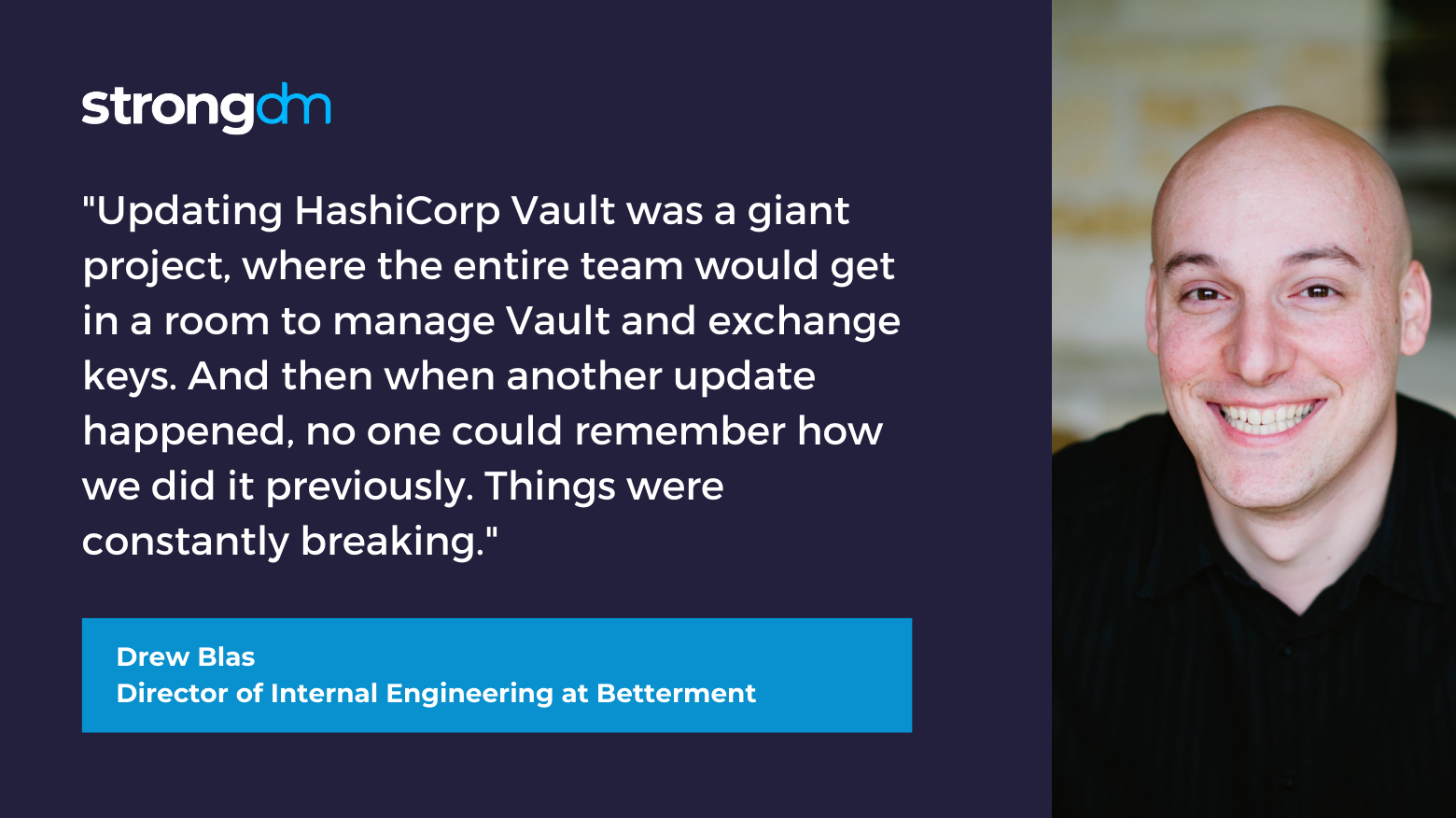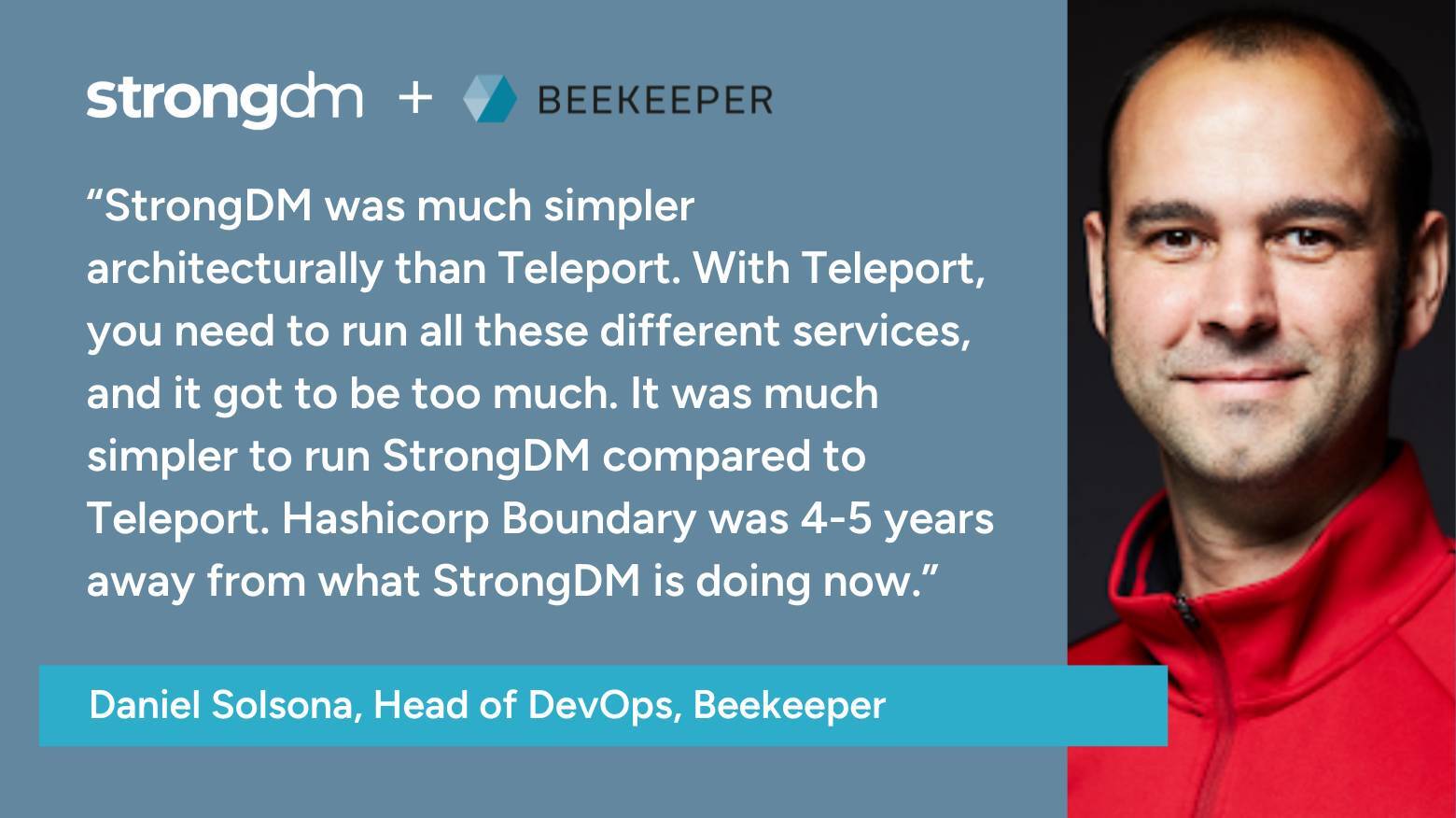Proofpoint is a SaaS based cybersecurity and compliance company which purchased Meta Networks in 2019. Proofpoint ZTNA (Meta Networks) is a Zero Trust Network Access provider that specializes in granting secure remote access from a user-level. They focus heavily on providing users with the ability to securely access company resources from any location, while ditching the need for a VPN. However, if you're looking for a simple and secure way, without expensive starting costs and required
Posts by Category:
- Security
- Access
- DevOps
- Privileged Access Management
- Auditing
- Zero Trust
- Compliance
- Policy
- Databases
- SOC 2
- Authentication
- Identity and Access Management
- Team
- Compare
- Engineering
- Integrations
- Product
- Kubernetes
- AWS
- Productivity
- Podcasts
- SSH
- Observability
- HIPAA
- ISO 27001
- Role-Based Access Control
- Dynamic Access Management
- Secure Access Service Edge
- Webinars
- Events
- NIST
- Onboarding
- Passwordless
- Offsites
- Platform
- PCI
BeyondTrust FKA Bomgar is an access management and endpoint security solution which provides end user access and monitoring for a variety of platforms and devices including: Linux, Windows, Mac, Unix, and other mobile and cloud platforms. BeyondTrust has a host of solutions in privileged identity & access management, privileged remote access and vulnerability management. However, if you're looking for a simple and secure way to manage access to databases, Kubernetes clusters, or other internal
Perimeter 81 is a cloud-based Secure Access Service Edge (SASE) platform that provides centralized access to local networks, applications, and cloud resources. The company takes a security-first approach and aims to disrupt the VPN industry by offering a simple and scalable network access alternative for organizations of all sizes. However, if you're looking for a more reliable and enterprise-ready solution to manage access to infrastructure, Perimeter 81 might not be the best solution for your
Identity-Aware Proxy (IAP) is a Google Cloud Platform service that centralizes user access to SaaS applications and other cloud resources accessed by HTTPS. IAP secures authentication for requests made to virtual machines running on GCP and other cloud-based and on-premises applications, only granting access to users you authorize. With IAP, users can connect from untrusted networks without using a VPN.
Twingate started in 2019 in response to the growing challenges of managing access for a remote workforce. The product offers a zero-trust, cloud-based solution that aims to replace Virtual Private Networks (VPNs) by providing a secure, quick-to-implement solution for IT admins and everyday users. However, if you have a distributed workforce in need of access to databases, Kubernetes clusters, cloud CLIs, switches, routers, or internal web applications, there are other tools to consider. In this
Thycotic was founded in 1996 as a consulting company and has evolved into a leading provider of Privileged Access Management (PAM). Thycotic’s Privilege Manager is a tool that allows organizations to secure access for privileged administrators (typically systems and database administrators) to Windows Servers, Linux servers, and some database management systems through a centralized authentication method. It does not secure access to modern and cloud-native databases, Kubernetes clusters, the
AWS Cognito is a user authentication service that lets you add access control to your web and mobile apps. Cognito manages sign-up, sign-in, password changes, token refresh, data synchronization, and updates to user account attributes. The service is initially free for AWS users, and the pricing model scales as your user base grows.
Tailscale is a zero-configuration virtual private cloud that builds secure networks for WireGuard-encrypted traffic. Tailscale replaces traditional VPNs with a coordination node that acts as a control plane to manage keys and identities. This allows you to create a secure network between cloud resources without the need for firewall configuration changes. However, if your goal is to centralize and secure access to databases, servers, Kubernetes, and more, a VPN (even a fancy modern one) may not

HashiCorp Boundary is an open-source identity access management (IAM) tool that facilitates secure user access to dynamic hosts and critical infrastructure across environments. However, if you need a simple and secure way to manage access to databases, Kubernetes clusters, cloud CLIs, switches, routers, or internal web applications, there are other services to consider. In this blog post, we’ll take a look at a few alternatives and discuss the strengths and weaknesses of each. First, a quick

CyberArk’s Privileged Access Manager is a tool that allows organizations to secure access for privileged administrators (typically systems and database administrators) to Windows Servers, Linux servers, and some database management systems via a centralized authentication method. However, if you need to secure access to modern and cloud-native databases, Kubernetes clusters, cloud CLIs, switches, routers, or internal web applications, there are other options to consider.
Okta’s Advanced Server Access (ScaleFT) is a tool allowing organizations to secure access to SSH and RDP servers via a centralized authentication method. However, if you need to secure access to databases, Kubernetes clusters, the cloud CLIs, switches, routers, or internal web applications, there are other options to consider.

HashiCorp Vault is a powerful secrets management tool that is well suited to automating the creation, distribution, and destruction of secrets. However, if your goal is to secure access to sensitive systems, a secrets store is not the only approach. In this blog post we’ll look at a few alternatives, with my take on the strengths and weaknesses of each approach.

Gravitational Teleport is a powerful tool allowing organizations to secure access to SSH servers and Kubernetes clusters via a centralized authentication method. However, if you need to secure access to databases, Windows servers or internal web applications in addition to Linux servers/Kubernetes, there are other options to consider.
